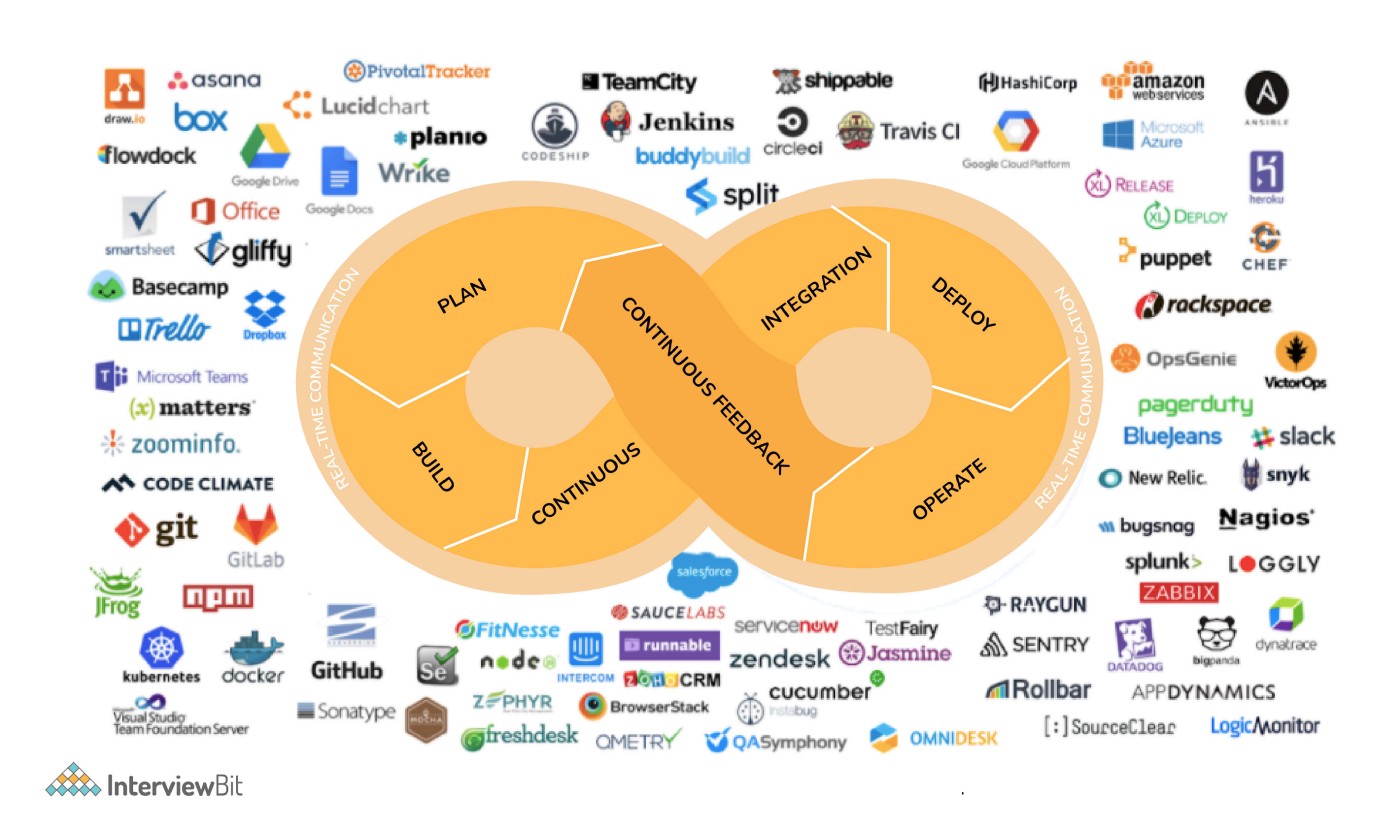What Is a Tech Stack and How To Choose the Right One? In spite of its name, a tech stack has little to do with pancakes or money. Instead a tech stack, is a necessary part of every software development project. Stack technology is built intentionally, with each layer contributing a major utility through the …
What Is a Tech Stack and How To Choose the Right One?
In spite of its name, a tech stack has little to do with pancakes or money. Instead a tech stack, is a necessary part of every software development project.
Stack technology is built intentionally, with each layer contributing a major utility through the means of distinct but cooperative software types.
While some aspects of a technical stack may seem complex at first, understanding applications with the language of technical stacks helps facilitate succinct and straightforward communication between developers.
Learn more about tech stacks here!
What Is a Tech Stack?
A tech stack, alternatively called a solutions stack, is simply a collection of software services that are used for application development.
Naturally, there are several different software-based outcomes that developers have the opportunity to build, meaning that technical stack types are just as diverse.
A web stack, for one, requires software specifically necessary for web application development.
An application stack, in contrast, would need a number of differing software to ensure an operational application, as well as the software that pertains to the infrastructure of the application’s running environment.
Some tech stacks are so popular that they have taken on clever acronyms to describe their makeup.
One common example of a technology stack best suited for Linux distributions is known by the acronym LAMP. LAMP stands for the following four open-source software components:
-
Linux
-
Apache
-
MySQL
-
PHP/Perl/Python.
Linux is the operating system. Apache is a web server. MySQL is a database management system. Finally, PHP is the programming language for the application. Altogether, this software stack is capable of building highly functional web applications.
LAMP is just one of many stacks that point developers in the right direction when it comes to programming software.
Another open-source software stack for building web sites is called MEAN:
-
MongoDB
-
Express.js
-
AngularJS and
-
Node.js
They all respectively make up the MEAN software stack.
This particular stack has two main advantages – it does not rely on an operating system nor does it stray far from JavaScript as the primary programming language of the stack. This makes MEAN and LAMP frequent competitors for the attention of startup tech businesses.
By using deliberate frameworks like LAMP and MEAN, software developers can be prepared for what lies ahead in any development process.
With research, software teams can make calculated decisions to ensure they pick the stack technology that is the most beneficial for their needs.
Why Is a Technology Stack Important?
As mentioned, a technology stack’s greatest asset is its conversational skills. That is, the importance of a tech stack lies in its ability to convey many details in a concise manner.
But what is perhaps even more important is how you use the details you learn. To the knowledgeable software developer, just a few words can reveal the strengths and weaknesses of any given application.
Information of this quality not only determines the durability of your application but the success of your business as a whole.
For instance, the MEAN stack depends almost exclusively on JavaScript as its programming language. MEAN’s strict reliance on JavaScript removes a layer of complexity in many parts of the application-building methodology.
As an illustration, employing developers who know JavaScript should be fairly easy as JavaScript is a well-known language and developers would only need to be familiar with the one.
JavaScript also has numerous libraries and structures which promise some ease in flexibility in scaling your business when the time comes.
On the other hand, every stack comes with its disadvantages. Many people flock towards JavaScript entirely because of its popularity.
Unfortunately, less experienced developers are not always adept at learning and managing the new libraries and frameworks that JavaScript has to offer. A skilled team of software developers must keep all these considerations in mind to build the optimal tech stack.
What Are The Differences Between Mobile and Web Apps Tech Stacks?
The concept of a tech stack in and of itself can be universally applied. Whether you aim to build a server stack, a web stack, or application stack, you still need to compartmentalize the various segments and layers of your stack and deduce what software is needed for each.
But the composition of a mobile app versus a web app have key differences, and thus their tech stacks consist of different elements.
The context of a web application can be fairly general. In all cases, the base elements will have software dedicated to the server, database, and operating system of a web application – in addition to the foundational programming language of the website.
There are many options in regards to what exactly the tech stack will look like internally, as far as the precise software is concerned, but the overall layers have the same construct.
To compare, mobile applications tend to have some choice concerns to take into account:
Multi-Channel Functionality
Mobile applications need to be optimized for multiple channels. Though websites have the liberty to simply be websites, mobile apps are typically expected to be accessible on a variety of platforms.
The average smartphone user in the United States spends about three hours per day on their phone and 90% of that time is faithful to mobile apps.
But in a world of tablets, laptops, and smart TVs, people merely move on to another mobile device. Having mobile apps with a capacity for multi-channel use is therefore imperative.
API Integration
Similarly essential is how your mobile tech stack interacts with the background APIs of a smartphone.
An API, or application programming interface, defines a set of protocols for integrating miscellaneous programs with internal software.
In a smartphone environment, the tool that enables touch screen detection is an example of an API. Mobile app developers have to build tech stacks that have collaborative abilities for this level of integration.
Core Smartphone Services
Mobile apps also have to work with the day-to-day features of a common smartphone like geographic mapping, offline support, pop-up notifications, and security.
These features go beyond the scope of what a web application would ever request from a user. Ergo, developers have a responsibility to enhance their mobile tech stack to work alongside these features.
These are only three demonstrations of how a mobile app and web app can differ. At the very least, you should regard these factors when building a mobile tech stack; but there is unquestionably more to consider.
Front-End Tech Stack
A front-end tech stack includes the technologies that developers would use to build user interfaces.
Front-end development, often called client-side development, ultimately determines the visual elements of the app.
Front-end developers are inclined to use HTML, CSS, and JavaScript to build web apps.
These programming languages, particularly HTML and CSS, are used to code colors, fonts, images, and graphs, and all visual aspects of the application. JavaScript helps to provide the interactive nature of the app.
Essentially, utilitarian and aesthetic design are synthesized with the application’s responsiveness in front-end development.
Back-End Tech Stack
Back-end development, also called server-side development, calls for a back-end tech stack.
On the server-side, back-end developers typically manage APIs, data storage, and all the other internal operations of a given app.
Back-end web developers favor languages like Ruby, Python, and C++.
Users are not able to see the inner workings of an application’s server-side, yet these workings are the chief support for client-side operations.
Back-end development serves as an indirect vessel for users on the front-end to solicit serviceable activity.
Front-end developers work together with back-end development to make certain that an application can reach peak performance for its users. There are full stack developers as well who have the skills to work both on the client-side and the server-side in app development.
7 Examples of iOS and Android Tech Stacks
Now that you know how mobile apps and web apps differ, you should not be surprised that the languages used for mobile apps are variable as well.
Just like web applications have a dependable set of programming languages, mobile application developers opt to use a few of the many mobile programming languages and toolsets available to them.
1. XCode
XCode is an IDE, or Integrated Development Environment, used to develop mobile and web apps for Apple iOS and macOS.
IDEs allow programmers to consolidate the numerous facets of writing, running, and debugging code into one application.
XCode is free and the preferred toolset for Apple products. It is compatible with quite a few programming languages such as C++, Python, Objective-C, Ruby, and more.
2. Objective-C
Objective-C is a programming language for iOS applications. It is high-level and object-oriented.
Object-oriented means that the language authorizes developers to create objects that can be manipulated.
Before Swift came about, Objective-C was the predominant programming language for all iOS apps. Objective-C is compatible with C++.
3. Swift
Swift is an open-source programming language used both for iOS and Linux applications. It is self-proclaimed as being multi-purpose.
However, its real benefit has to do with its inline support and dynamic libraries which can be stored in memory, decreasing app size. Swift is compatible with Objective-C.
4. App Code
App Code is an IDE for iOS, deemed an alternative to XCode that enables faster coding. Like XCode, it is compatible with multiple programming languages like that of Objective-C, Swift, JavaScript, and C++.
5. Kotlin
Kotlin is a recently developed programming language for Android. It is both open-source and object-oriented, open-source denoting that the code is available for others to edit.
The syntax for Kotlin is notably efficient, causing fewer errors. Kotlin is compatible with Java projects.
6. Java
Java at one point was the most widely used programming language for developing Android applications. It is class-based and object-oriented.
Although Java’s biggest downfall is its speed and memory consumption, it is famous for its open-source tools and appreciable libraries.
7. Android Studio
Android Studio is an IDE credited to Google which permits the creation of high-quality Android applications. Android Studio also works with all PC operating systems.
The aforementioned IDEs and programming languages are integral in developing mobile apps for iOS and Android, the leading platforms in smartphone use.
Building applications for iOS and Android in turn for just one or the other will give your mobile app an easily acquired advantage.
How To Know What Tech Stack a Website or an App Is Using?
Most major companies will naturally want to keep the technology their using under wraps.
But a number of companies are rather open about the tech stack their software using, particularly the popular ones.
Facebook, for one, has a whole website that dives deep into the software details of their various engineering pursuits. This includes not only Facebook the social media network but Meta as well.
Tumblr regularly updates its engineering blog and features it on their very own website.
Netflix, PayPal, Walmart, and other big companies even have Medium accounts where they routinely update readers on what’s going on inside their engineering teams.
In short, the best way to know what’s going on in another company tech stack is to do some heavy research and stay tuned in to the companies you care most about.
There are also less reliable ways to get your answers. Stack Share, for example, is a website that lists the tech stacks of various companies, but there’s no way to verify their legitimacy.
Similarly, you can take to your local search engine and browse the hypothesis of Reddiors and Quora posters.
Admittedly, internet users sometimes have the most up-to-date knowledge of these things. And many in-the-know developers dwell on the world wide web.
As a matter of fact, the co-creator of Django is a frequent Quora contributor!
How To Choose the Right Tech Stack?
Choosing the right tech stack starts by evaluating certain characteristics of your business and the app you have in mind. The consequence of choosing the wrong stack is wasted time and effort. But choosing the right stack will help you and your developers be productive and successful.
Make sure you have carefully considered the particulars of your project in order to choose the right stack:
-
Project requirements
The larger your project is in terms of scope and features, the more intricate your tech stack will be. Identify the size of your project first and foremost.
Small projects can be built with the most popular stacks. You should seek out professional expertise if your project size is medium or large.
-
Scalability
Scalability can be both horizontal and vertical. Horizontal scalability outlines the app’s versatility for use on different devices and with an increasing number of uses.
Vertical scalability relates to the addition of new features to the app. Use powerful programming languages to achieve the ideal scalability.
-
Resources
Your ability to find developers that have proficiency with the programming languages included in your stack can either make or break your project.
Pick commonly used languages to avoid this problem.
-
Maintenance
Hiring a developer is a given, but you will need to have a way of providing support for your app once there’s a need for troubleshooting or an upgrade.
Using open-source software will warrant the changes and updates to your project without any undue restrictions.
-
Security
An app that is not secure is detrimental for the app’s users as well as you and your business. Run security tests on a recurring schedule to mitigate threats.
-
Speed
The faster your app is out on the market, the faster you will get user feedback and profit off of the development. Again, using common tech stacks will reduce the overall time spent developing the project.
How To Build a Technology Stack?
Garnering familiarity with technology stacks, their purpose, and their execution is the first step in developing your own mobile app.
For the average developer, developing an app can take many months. It necessitates intensive research and learning, not to mention writing the code and freeing it of any errors that arise.
Unsurprisingly, for those launching a tech startup with little to no coding background, developing an app is even more difficult.
Tech stacks play a crucial role in the development of your project and it is vital to have qualified developers on your side, guiding your project toward prosperity.
Regardless of the tech stack you choose for your app, you should be invested in how your project will manifest in real-time.






